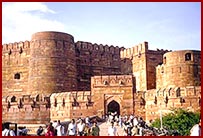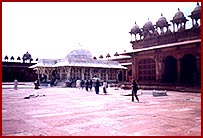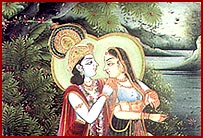

 Taj
Mahal: By the banks of the river Yamuna, Taj Mahal a poignant poetry
in marble, the most extravagant monuments ever built for lover is a tribute to
the timelessness of art and love. Built by Shahjahan in 1652 in the memory of
his beloved wife Mumtaz Mahal, the lady of the Taj.The main architect, Isa Khan,
came all the way from Shiraz in Iran..
Taj
Mahal: By the banks of the river Yamuna, Taj Mahal a poignant poetry
in marble, the most extravagant monuments ever built for lover is a tribute to
the timelessness of art and love. Built by Shahjahan in 1652 in the memory of
his beloved wife Mumtaz Mahal, the lady of the Taj.The main architect, Isa Khan,
came all the way from Shiraz in Iran..
 It is a
combination of Hindu, Muslim and Persian architecture. Akbar began the
construction of his own garden mausoleum during his lifetime.
It is a
combination of Hindu, Muslim and Persian architecture. Akbar began the
construction of his own garden mausoleum during his lifetime. Situated on the west bank of the river
Yamuna 'Mathura' the birth place of Lord Krishna. Kanishka made it the capital
of his eastern empire and the city became an important centre of trade,
learning, arts and structure. The 'Janmashtami' celebrated here is very famous
throughout the country. The Raslila is regarded as one of the most popular
dramatic performance in India.
Situated on the west bank of the river
Yamuna 'Mathura' the birth place of Lord Krishna. Kanishka made it the capital
of his eastern empire and the city became an important centre of trade,
learning, arts and structure. The 'Janmashtami' celebrated here is very famous
throughout the country. The Raslila is regarded as one of the most popular
dramatic performance in India. The twin city to Mathura is synonymous with the devotees of Lord
Krishna and people from all over the world congregate at Vrindavan. Some unique
festivals such as colorful Holi and Janamashtami are celebrated at Vrindavan.
The twin city to Mathura is synonymous with the devotees of Lord
Krishna and people from all over the world congregate at Vrindavan. Some unique
festivals such as colorful Holi and Janamashtami are celebrated at Vrindavan.
| Home | About Us |
Contact |
E-mail
| Query
| Site Map |
| ||||
|
|